On Monday, the Board of Education took an official first step towards the implementation of a 1:1 environment at Ottumwa High School. In August, every student will receive an individual computer to support their learning.
The decision to put a computer into the hands of every high school student was not a quick one. A committee was formed in the winter of 2017 with to determine what the future of OHS technology should look like. There was a strong sense of urgency to respond to the overwhelming need for student devices. The urgency was elevated due to essential online assessments, online-based resources, and the recent pilot of Schoology, a Learning Management System that will be implemented in the fall.
For over six months, the committee researched various device options, evaluating over 19 different computers. Over the past few months, the committee dug deeper into the details. They explored a solution called Virtual Desktop Infrastructure (VDI); 1:1 device logistics and procedures; and a revision of the district's technology policies. Part of this process included the creation of an Acceptable Use Policy that each student will sign prior to receiving a device.
This winter, the committee surveyed OHS teachers to determine needs in the area of support, software, and additional devices.
The committee made a recommendation to the board on Monday to lease 1,450 HP Chromebooks. The devices feature a touchscreen, have been tested for durability, and include a backlit keyboard that is spill and key picking resistant. Fourteen other Iowa districts of comparable size are using Chromebooks as well. "The OHS Technology Committee has done an excellent job assisting with this process and helping formulate what 1:1 should look like in Ottumwa," said Tyler Courtney, the district's Technology Director. "The entire project has been extremely granular. We have pushed out surveys and listened to feedback from all sides and considered both the positives and the negatives."
The lease provides a framework for device replacement every three years. The total cost of $591,152 will be taken from SAVE, the Statewide Sales Tax for School Infrastructure fund.
"Planning a new 1:1 initiative has been quite a challenge," Courtney said. "Forming new policies and procedures and just thinking about all of the 'what if's' has proven to be quite time-consuming. It will surely be a learning experience for everyone but, the benefits that the students will gain will make the entire project well worth it in the long run. Giving students the ability to learn and research on their own outside of the school walls will be a huge accomplishment.".

